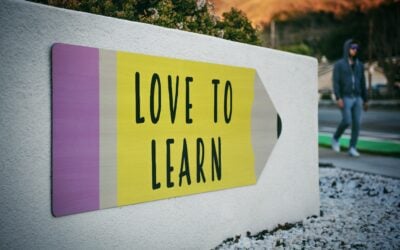Imagine somebody telling you, “You must learn this precise information and you must learn it in this way.” To me, this is abhorrent. I don’t want somebody to tell me what I must learn and how I must learn it. Instead, I want to be able to follow my own interests and choose what I learn. Our youth are almost always told what they will learn and how they will learn it. Too often, they are treated like automatons and told precisely what to do and when to do it. Certainly, there are some very important skills, facts, and principles that students must learn. But, effective learning can, indeed must, include choice. This blog post will consider four ways to effectively incorporate choices in the learning process.
- Challenge students to select a project of their choice to demonstrate mastery learning.
Educational research clearly demonstrates that students both learn and think in different ways. Even before this research was done, people with common sense knew that different people had different interests. Creative teachers, and teachers who encourage students to develop their own creativity, invite students to create their own demonstrations of mastery. For example, kinesthetic students might be encouraged to develop dances demonstrating specific ideas. Consider how dances could even demonstrate scientific and mathematical ideas. Of course, students should be challenged and perhaps even required to experiment with different types of demonstrations of mastery.
- Provide a selection of a specific number of tasks that must be completed but allow students to select a portion of these tasks to complete.
Master teachers know that too much choice can sometimes hinder learning. These teachers are skilled at determining how much choice to allow and when to allow it. These decisions are always made to maximize learning. Teachers can assign a list of different tasks that students could complete to demonstrate knowledge acquisition but allow students to choose a subset of these tasks. For example, in a math class teachers could ask students to develop a video or write a poem to prove a specific equation correct. Of course, teachers could also develop categories, each including several tasks, and ask students to complete one or more task from each category.

- Invite students to select the medium of their choice through which they will learn something new.
We live at a time in which many different types of media exist to articulate and explain information that students might be expected to glean in school. These media include video, audio, and text. Simply Google “Boston Tea Party 6th Grade” and more than one half million entries pop up. Students could be allowed to pick their own information and then report back to the class. Teachers could identify a list of sites from which students could choose. (Check out A Pass’ work with freely available digital resources, here.) Certainly, not every website is equal. Some contain better information than others. Therefore, as part of this activity, teaching and learning could also incorporate informational literacy skills.

- Allow students to work in the position in which they are most comfortable.
This final suggestion for promoting choices in learning is near and dear to my heart. When I was a young teacher, I had a 6th grade student who always stood up during class. It drove me nuts. (Not that it was that far of a drive.) Finally, one day, I realized, why should he have to sit in class. Is there some reason that you cannot learn if you are standing? Scott’s face lit up, when I told him that he could stand in class. It was an epiphany for both of us. Years later, I had a fifth grader who hung upside down on a jungle gym, that happened to be in our classroom, while he read. I thought about telling Josh that he at least had to lie on the floor as he read but then I realized that my own son, Evan, could read hanging upside down. Josh and Evan were in hip-hop dance class together. If it worked for them, they should be allowed to do it. Josh certainly understood the material he read, so who was I to tell him what physical position he should be in as he read?
Of course, there are many other ways to incorporate choice into the learning process. How have you done this?




